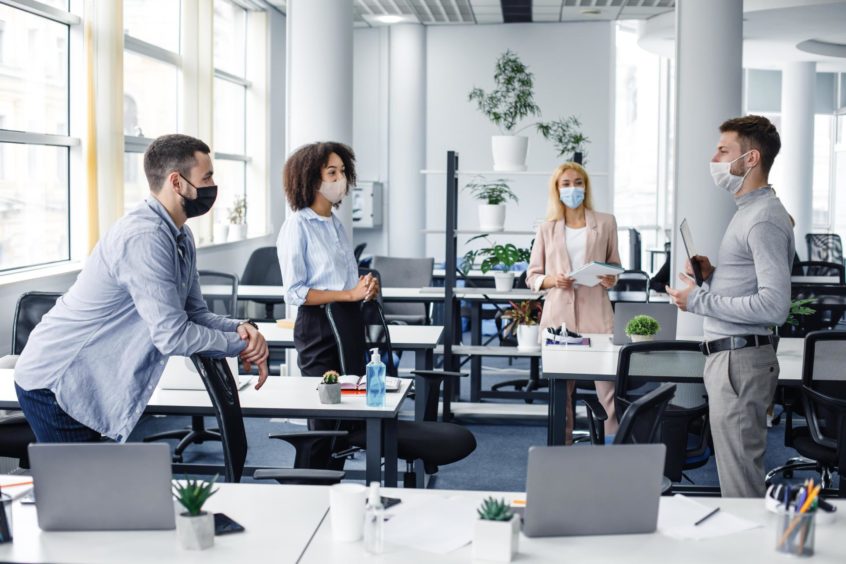
Creating the perfect workplace starts with questions (the right questions) and people (the right people). The right questions are often the difficult questions.
Consultancy led design relies on honest dialogue between the client and designers, so it’s essential to ask the right questions at the start. Sometimes you’re pushing against an open door, sometimes it’s slightly ajar, and sometimes it’s most definitely closed.
Knowing how much, if any, force to apply relies on the experience of the designer asking the questions.
The most difficult questions? Budget and sustainability.
Discussing budget early on can be difficult, as clients often fear that if they say “we have £X to spend” the creative team will design to that budget. Designers need to understand at an early stage whether we’re talking about a lick of paint or a total revamp of the environment to support new ways of working. If the current office is falling to bits but the aspirations are for a Google-style workplace then we have to ask questions about budget and ambition early on.
As designers, we’re always seeking the best design solution to address our clients’ needs, but if the budget isn’t part of the conversation, are we truly meeting those needs? Designers can be creative, can incorporate style, can deliver both functionality and the wow factor with the smallest of budgets. For the design team, it’s not about “Look how much we can spend!”, it’s about translating a realistic vision.
It used to be that cost, quality and time were the three pillars of project delivery, but the triangle has become a square with sustainability. Budget and sustainability are inextricably linked, but it’s not always a zero-sum-game. Yes, there can be some added costs with cutting-edge sustainable design solutions, but suppliers and specifiers are working hard to develop their green credentials, leaving designers with choices when it comes to sustainable products.
The circular economy is an opportunity for all; it’s not a threat. And the days of sending perfectly good furniture and fit-out to landfill are hopefully over. However, a circular solution does come with its own challenges, regardless of whether your new office is in a different location or is a transformation of your current space. For example, what happens if the design team wants to reuse the current desks, but the new space plan only works if they are re-engineered to a smaller size? We can easily accomplish this, but only if we ask the right questions first and make sure the client understands how this will impact on the budget and why it’s a viable, sustainable option.
Most people have an interest in design, and often our clients have an interest in how their spaces might look, but they struggle with how these spaces should function. It’s our job to bring to the surface the key aspects of the business that the workplace can support and to knit together the function and the aesthetics of the space. I believe that good design begins and evolves through effective brief-taking. This iterative process relies on open and honest dialogue between the client and designer, emphasising the importance of asking the right questions to the right people from the start.
Budget and sustainability pose significant challenges, and early budget discussions are crucial for establishing realistic parameters. Our skill lies in understanding the precise functional and aesthetic requirements and objectives of the client, while also considering the project’s constraints. With this, we can devise solutions that seamlessly align with our client’s vision and specifications.
The role of the design team is not just to ask difficult questions, it’s their responsibility to also come up with ingenuous solutions to these questions, to think quickly on their feet, and come up with alternative solutions. After all, that’s why you bring in experts when you want to create your perfect workplace.
Find out more at www.spacesolutions.co.uk.
Recommended for you
